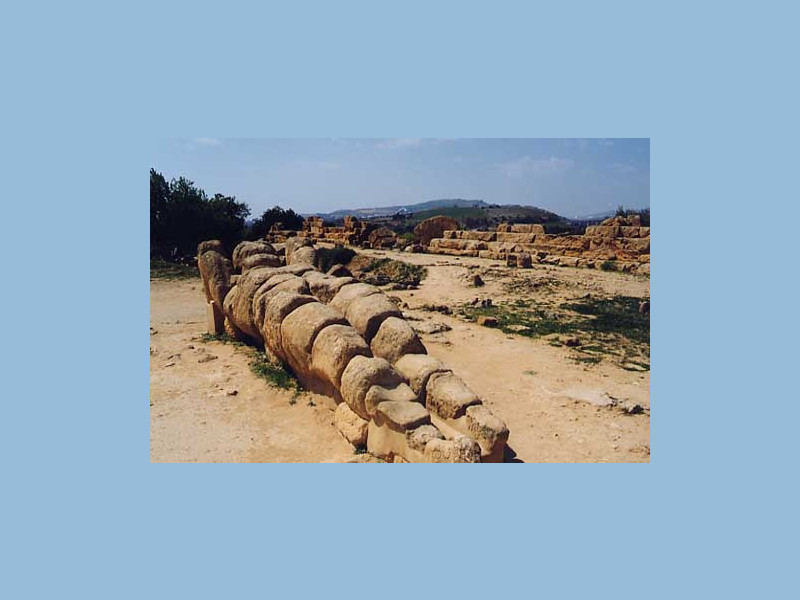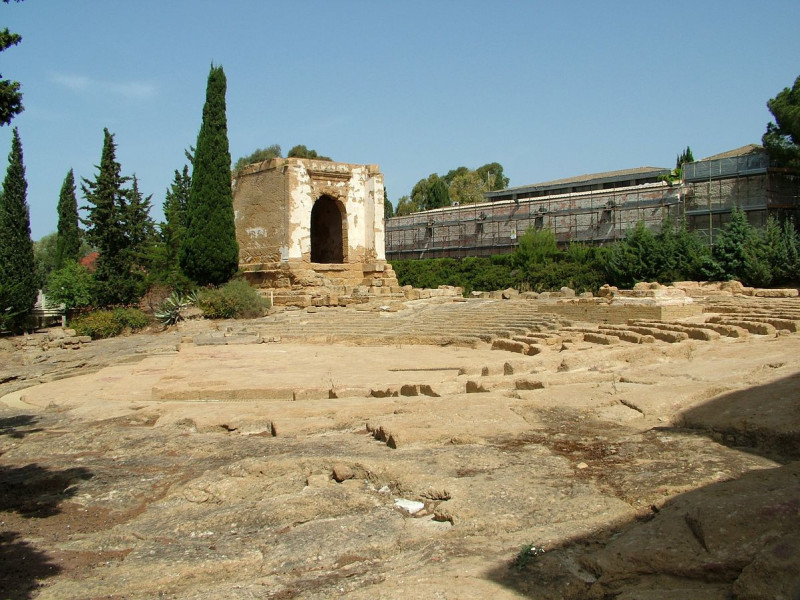Parco Archeologico e Paesaggistico della Valle dei Templi (Sito UNESCO)
Archaeological and Landscape Park of the Valley of the Temples extends over 1300 hectares and contains exceptional monumental and landscape heritage, which includes the ruins of ancient city of Akragas and its surrounding territory up to the sea. In the Valley of Temples, declared UNESCO World Heritage Site in 1997, there is one of the main archaeological complexes of Mediterranean, immersed in a rural landscape of rare beauty characterized by the presence of century-old olive and almond trees. Akragas was one of the most important Greek colonies in Sicily. It extended over an area of 450 hectares and was founded around 582 B.C. by colonists from the nearby town of Gela and from Rhodes. The site chosen for the foundation was a plateau, protected to the north by Rupe Atenea and by the hill of Girgenti and to the south by the long Collina dei Templi ('Hill of the Temples') and bordered by Akragas and the Hypsas rivers, which converge into a single stream towards the sea. Ancient port (emporion) was at the mouth of this river. The city took its name from Akragas river, rich in crabs. Ever since its beginnings - under the tirrany of Phalaris (570-554 B.C.), famous for his cruelty - the city developed in terraces and had a regular urban plan. The acropolis was on Rupe Atenea and had both a sacred and a defensive function. Monumental sanctuaries were on Collina dei Templi. The area in the middle was occupied by houses and public buildings, while the dead were buried in the necropoleis, outside the city walls. In the last decades of the 6th century B.C., a massive defensive wall, twelve kilometers long and with nine gates, was built around Akragas. This colony became famous and powerful under the tyrant Theron (488-471 B.C.) who defeated Carthaginians in the Battle of Himera (480 B.C.) and, even more, during the period of the democracy (471-406 B.C.), instituted by the akragantine philosopher Empedocles. Magnificent series of Doric temples on the southern hill of Agrigento was built during this period. A second conflict with Carthaginians marked the end of a flourishing period and in 406 B.C. Akragas was destroyed. Later the city lived another phase of development with the arrival, between 338 and 334 B.C., of Greek colonists guided by the general Timoleon, although it never regained its past splendour and its fate was dependent on the outcome of the conflict between Rome and Carthage for the rule of Mediterranean. During Punic wars, Akragas was the base of the Carthaginians, but in 210 B.C. Romans conquered it and changed its name to Agrigentum. Under Roman rule, the city lived another phase of prosperity connected to sulphur trade (2nd to 4th centuries A.C.). During Christian times churches and cemeteries were built on Collina dei Templi. When in 829 Arabs conquered the city, the residential quarters had already been moved up to where modern-day Agrigento is, on the hill of Girgenti, so-called from Medieval name of the city (from Arab Gergent or Kerkent).



